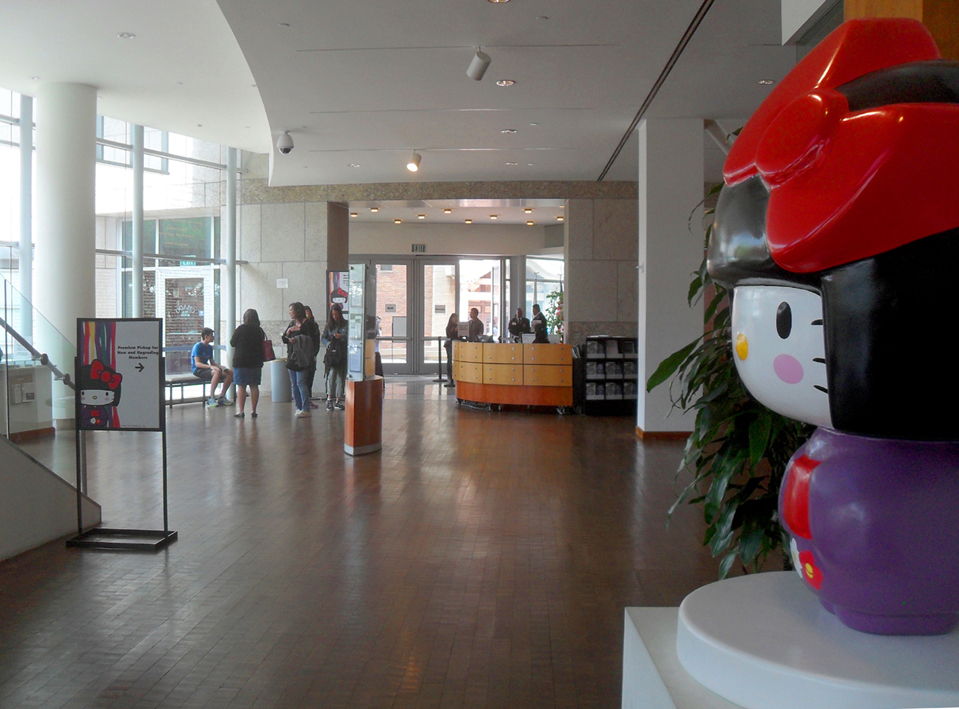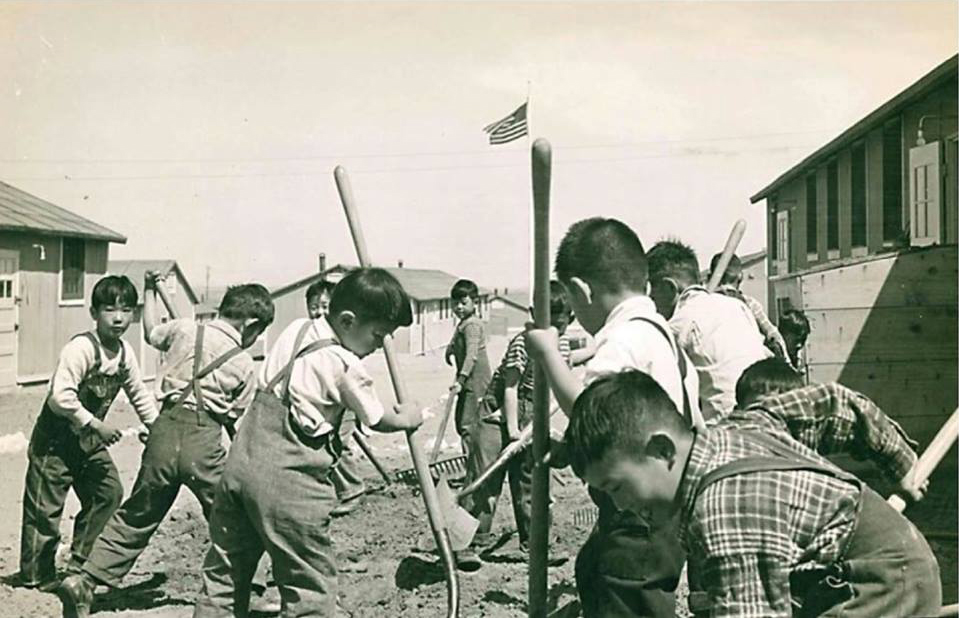The Eaton Collection Arrives at
L.A.'s Japanese American National Museum

Los Angeles, 2015. A four-foot Hello Kitty in a kimono, a collaboration between the museum in Little Tokyo and Sanrio, greeted guests to the survey and exhibition of the 40-year-old icon of cute at the downtown institution earlier this year. The show broke JANM's attendance records, surpassing numbers for its 2014 photography exhibition of contemporary Japanese tattoos (photographed by Akiko Ichikawa)
The Allen H. Eaton collection of artifacts and artwork created and collected by people of Japanese descent in the U.S. during World War II while under incarceration without trial, the auction for which was halted in May under the work of a myriad of people, organizations, and a Change.org petition, arrived in June at the Japanese American National Museum (JANM) in Los Angeles' Little Tokyo in less than ideal condition. Museum trustee and former Secretary of Transportation under George W. Bush Norman Mineta described the objects "as suspected" as necessitating "significant conservation." This despite John Ryan, the Tri-State-based consigner and previous owner of the objects, assuring the New York Times that his family had "always loved the collection," that they had "tried to be good stewards of this material and protect it over the years."

The sale of the collection to JANM in May was not without controversy. After the auction was stopped, the 23-year-old museum broke from the consortium it had joined with institutions like the Smithsonian, the National Park Service Office of Cultural Services, and the Heart Mountain Wyoming Foundation to negotiate for the objects together, making a separate deal with Ryan and New Jersey's Rago auction house to acquire the collection. The sale occurred against a wave of more general interest U.S. institutions also fielding interest, and with the help of an auctioneer whom JANM museum president and CEO Greg Kimura described to me as "a person of good will." Many in the community, however, felt betrayed, having been informed of the transaction after it had taken place. Activism around the auction shifted to address the museum, and Kimura apologized for the manner in which the deal was made. JANM trustees board member Mineta was also promoted to chair of the board and seems to have helped eased communal tensions around the issues of keeping a white person's collection intact and spreading credit for terminating the auction, which involved work by countless people across the country, efforts spearheaded by sansei women like Dr. Satsuki Ina, Nancy Russell, and Barbara Takei (unrelated to George).